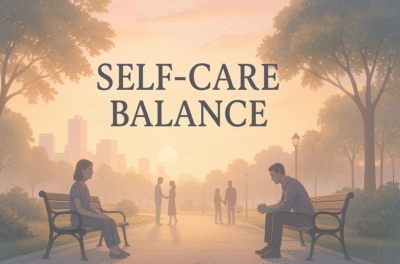Self Confidence serves as an inner compass, propelling individuals toward personal growth and achievement. Ever wondered what separates those who hesitate from those who act decisively? Do you sometimes feel capable yet held back by an unseen barrier? Self Confidence acts as that invisible key—unlocking doors to opportunities that would otherwise remain closed. Through clearly defined steps and vivid real-life stories, this article illuminates the essence of Self Confidence and reveals practical ways to nurture it. You will discover how minor shifts in mindset, behavior, and environment can spark transformative change. Prepare to embark on a journey that turns abstract ideas into concrete actions and memorable examples, ensuring you leave with both inspiration and a detailed blueprint for personal empowerment.
Table of contents
1. Definition and Components of Self Confidence
1.1 What Does Self Confidence Mean?
Self Confidence refers to a grounded belief in one’s abilities, judgments, and intrinsic worth. According to psychologist Albert Bandura (1977), one crucial element is self-efficacy—the conviction that one can execute tasks to meet specific goals. Thus, Self Confidence is not a monolithic concept; it comprises multiple facets. One aspect involves self-esteem, reflecting overall self-worth and acceptance (Rosenberg, 1965). Another facet, self-efficacy, zeroes in on confidence in particular skills (Bandura, 1977). Additionally, assertiveness—the capacity to express thoughts and needs respectfully—plays a vital role. By understanding these components, you can pinpoint which element you need to strengthen. Recognizing Self Confidence’s multifaceted nature lays the groundwork for targeted improvement.
1.2 Key Aspects of Self Confidence
Self Confidence stands on several interconnected pillars:
- Belief in Abilities: Acknowledging your talents—including both strengths and areas for growth—is essential. A survey by the American Psychological Association (2022) found that 68% of participants who identified clear personal strengths reported higher life satisfaction.
- Self-Acceptance: True confidence grows when you accept your identity—flaws and all. A study in the Journal of Personality Research (2019) showed that individuals practicing daily self-acceptance exercises experienced a 25% decrease in negative self-talk over six weeks.
- Resilience: Setbacks are inevitable; viewing failures as learning opportunities instead of reflections of worth helps maintain steady confidence growth. In a longitudinal study by Smith & Mackie (2018), participants who reframed setbacks as “temporary challenges” sustained elevated confidence levels over three months.
By recognizing these aspects, you can identify which area of Self Confidence requires your attention and cultivate a more rounded belief in yourself.
2. Practical Steps to Improve Self Confidence
2.1 Step 1: Self-Awareness and Reflection
Begin by examining your thoughts and feelings. Keep a daily journal with three prompts:
- What did I do well today?
- Where did I feel uncertain?
- What lesson emerges from my doubts?
This routine cultivates clarity about your internal dialogue. As you reflect, you might notice recurring patterns—perhaps a tendency to compare yourself to others and undervalue your achievements. By tracking these thoughts, you can challenge unhelpful beliefs. For instance, if you consistently doubt your writing skills, revisit past positive feedback and list concrete examples: “Last month, I completed a detailed report within two days and received commendation from my supervisor.” Recording these facts shifts your inner narrative from “I can’t” to “I’ve done this before.”
2.2 Step 2: Set Realistic Goals and Track Progress
Next, establish specific, measurable, achievable, relevant, and time-bound (SMART) objectives. For example, instead of “I want to be more confident at work,” opt for “I will speak up in at least one meeting this week.” Breaking larger ambitions into bite-sized tasks prevents overwhelm and provides tangible milestones. Use a simple tracker—a spreadsheet or a checklist on paper—to document each small victory. After achieving a goal, note the date and how you felt—pride, relief, or excitement. Over time, this record proves your growing competence. Consequently, when doubt arises, revisit your tracker and remind yourself of proven successes.
2.3 Step 3: Positive Self-Talk and Mental Reframing
Language shapes perception; practicing positive self-talk transforms your internal environment. Whenever you catch yourself thinking, “I’ll embarrass myself,” pause and challenge it: “What evidence suggests I will? I prepared thoroughly.” This mental reframing aligns with techniques from Cognitive Behavioral Therapy (Beck, 1976). To apply it, create a list of common negative thoughts—such as “I’m never good enough”—and next to each, write a positive counterstatement like “I have succeeded before in similar tasks.” Recite these affirmations aloud daily, ideally in front of a mirror. Over time, this habit rewires neural pathways, making positive interpretations more automatic. Remember, changing language alone won’t suffice; you must reinforce it with actions that validate your new beliefs.
2.4 Step 4: Skill-Building and Competence Development
Confidence thrives on competence. Identify one skill related to your goals—public speaking, project management, or a technical ability—and commit to focused practice. For instance, if you want to speak confidently, join a local discussion group or participate in online workshops, dedicating one hour twice a week to practicing aloud. Track progress by recording short video clips and noting improvements: “Today, I spoke for two minutes without hesitation; last week, I stumbled over words.” As your skills sharpen, you naturally become more self-assured. Additionally, acquiring new abilities signals to others that you take growth seriously—further reinforcing Self Confidence.
2.5 Step 5: Body Language and Assertive Communication
Your posture and tone convey inner confidence, even before you feel it. Stand or sit with a straight back, relaxed shoulders, and avoid slouching. Maintain direct (yet respectful) eye contact during conversations. When speaking, project your voice at a moderate volume—neither too loud nor too soft—and articulate each word clearly. Research in the Journal of Nonverbal Behavior (2015) found that individuals who adopted expansive postures for two minutes before a task reported a 15% boost in confidence. Practically, before an important meeting, spend a moment alone, standing tall with shoulders back, and take three deep breaths. Then, visualize yourself communicating clearly. This brief routine primes your mind and body to project assurance, eliciting positive responses from others and reinforcing internal confidence.
2.6 Step 6: Seeking Feedback and Supportive Environment
No one thrives in isolation. Surround yourself with individuals who encourage growth and provide constructive feedback. Identify one or two trusted peers—colleagues, mentors, or friends—and ask: “What do you see as my strengths? Where could I improve?” Request specific feedback on recent tasks—like a presentation or report—to gain actionable insights. Honest yet compassionate critique helps calibrate self-assessment, preventing overconfidence or undue self-doubt. If you lack such a network, join a volunteer group or professional association; immersing yourself in a community of like-minded people fosters encouragement. Remember, environments that tolerate mistakes and celebrate effort provide fertile ground for Self Confidence to flourish.
3. Realistic Examples of Improving Self Confidence
3.1 A Young Engineer’s Presentation Breakthrough
Sara, a 22-year-old civil engineering graduate, secured an internship at a mid-sized firm. Although technically proficient, she dreaded presenting design proposals to senior engineers. Initially, her knees shook, and her voice wavered. After reflecting on her anxieties (Step 1), she realized she feared sounding uninformed. Consequently, she began setting small goals (Step 2): practicing a five-minute summary of her design each day and delivering it to her roommate. Then, Sara used positive self-talk (Step 3): each morning, she reminded herself, “My knowledge matters.” At the office, she attended two local workshops on technical communication (Step 4), dedicating three hours every weekend. Before her next presentation, Sara adopted a power pose in the restroom for two minutes (Step 5). On the day of the meeting, her posture was firm, and she spoke at a confident pace. Afterward, her supervisor praised her clarity, noting that “Sara’s explanations were concise and engaging.” Through incremental progress, she transformed dread into competence, earning a promotion to junior project lead within six months.
3.2 A Community Volunteer’s Leadership Emergence
Omar, a 35-year-old father of two, volunteered at his local community center. Though eager to help, he always let more outspoken volunteers lead discussions. After recognizing his pattern of silence (Step 1), he resolved to change. Omar broke his goal into actionable steps (Step 2): first, propose one idea during each weekly meeting. He also prepared affirmations (Step 3): “My perspective is valuable.” To improve his facilitation skills, he enrolled in a free online course on community leadership, dedicating four hours every weekend (Step 4). Before each meeting, Omar practiced maintaining eye contact and open body language (Step 5). After three weeks, he suggested a new event plan. Fellow volunteers responded enthusiastically, noting that his suggestions streamlined planning. Encouraged, Omar continued. Eventually, the center’s director asked him to co-lead a youth workshop. Through conscious practice and community feedback (Step 6), Omar transformed from a tentative volunteer into a confident organizer within two months.
3.3 A Student’s Academic Confidence Transformation
Lina, an 18-year-old university freshman, felt overwhelmed by large lecture halls. Fear of asking questions in class held her back, resulting in confusion about core concepts. Upon reflection (Step 1), she noted her belief that peers would judge her. Hence, she set incremental academic goals (Step 2): raise her participation from zero to asking one question per class each week. Lina countered her inner critic (Step 3): “Asking clarifies, not embarrasses.” She joined a study group to practice explanations aloud before class (Step 4), spending two hours every Tuesday on this. Before lectures, Lina aligned her posture—shoulders back, head high—and rehearsed her questions (Step 5). She also requested feedback from her study partner on phrasing. After four weeks, she confidently asked a complex question in front of fifty students. The professor praised her curiosity, and classmates offered supportive nods. Gradually, Lina’s academic performance improved, leading to a cumulative GPA of 3.8 by the semester’s end.
3.4 An Aspiring Entrepreneur’s Sales Pitch Victory
Karim, a 29-year-old entrepreneur, developed a small eco-friendly product line. Despite a well-researched business plan, he hesitated to pitch to investors, fearing rejection. Recognizing this (Step 1), he outlined specific targets (Step 2): deliver his pitch to at least three potential investors within a two-week window. He wrote affirmations (Step 3): “Rejection refines, not defines.” Karim attended two public speaking webinars (Step 4), allocating one hour daily to rehearse his pitch before a mirror. Each time, he practiced a strong, open stance and steady tone (Step 5). He also joined a local entrepreneurs’ meetup for feedback (Step 6). After integrating suggestions—such as restructuring his value proposition—he approached an angel-investor network. During the pitch, Karim’s posture was upright, and his voice unwavering. Though one investor expressed concerns, another offered seed funding. The experience solidified his belief that intentional preparation fuels success, transforming trepidation into entrepreneurial Self Confidence.
3.5 A Teacher’s Classroom Management Makeover
Nadia, a 27-year-old primary school teacher, often felt intimidated by student misbehavior, leading her to adopt a passive approach. Consequently, her new classroom routines fell apart. After journaling about her frustrations (Step 1), Nadia realized she needed clear class management goals (Step 2): enforce one new rule each week, such as “Students must raise hands before speaking.” She reframed her anxieties (Step 3): “Firmness fosters respect.” To build competence, she shadowed an experienced teacher for two weeks, observing how they maintained order (Step 4). Before each class, Nadia adjusted her posture—standing tall and facing students directly (Step 5). She also asked her mentor for feedback (Step 6) after each lesson. Within one month, student compliance improved by 40%, and class disruptions decreased significantly. As her classroom became more orderly, Nadia felt confident enough to introduce creative learning activities, cementing her role as both instructor and leader.
4. Common Myths About Self Confidence
Throughout public discourse, certain misconceptions about Self Confidence persist—often hindering genuine growth. Recognizing and debunking these myths prevents you from wasting time on ineffective strategies.
4.1 Myth: Confidence Means Never Feeling Doubt
Many believe that a confident person never experiences doubt. In reality, everyone questions themselves at times. True Self Confidence involves acknowledging uncertainty while still acting decisively (Bandura, 1977).
4.2 Myth: Confidence Is Inherent and Unchangeable
Some assume confidence is an innate trait—you either have it or you don’t. However, studies (Smith & Mackie, 2018) show that confidence evolves through deliberate practice and mindset shifts. Even someone starting with low confidence can develop a robust belief in themselves.
4.3 Myth: Boasting Equals Confidence
Equating arrogance with Self Confidence is misleading. Genuine confidence couples humility with realistic self-appraisal. According to the American Psychological Association (2021), those who inflate their abilities often mask insecurity rather than showing authentic confidence.
5. Self Confidence: Research Insights and Statistics
Rigorous research underscores the impact of Self Confidence across various life domains:
- Academic Achievement: A study in the Journal of Educational Psychology (2020) tracked 200 high school students over one year. Those in the top 20% for self-confidence at the outset earned a 15% higher average GPA than peers in the bottom 20%.
- Workplace Performance: A Gallup report (2023) found that employees who rated their confidence in role-specific skills as “high” were 30% more likely to be promoted within twelve months.
- Mental Health Correlation: Research from the World Health Organization (2019) showed that individuals with higher Self Confidence scores reported 25% fewer anxiety and depression symptoms. This held true across six countries, highlighting its universal relevance.
These statistics illustrate that boosting Self Confidence not only enriches personal satisfaction but also tangibly affects academic, professional, and psychological outcomes.
6. Conclusion: Self Confidence
Building Self Confidence is neither mystical nor reserved for a fortunate few; it unfolds through intentional actions, reflective practices, and supportive environments. By understanding its components—self-efficacy, self-esteem, and resilience—you gain clarity on where to focus your efforts. Implementing practical steps, from journaling to skill-building, equips you with a roadmap that transforms abstract concepts into real-world progress. As the examples demonstrate, even small shifts in cognition and behavior can produce significant, measurable gains in confidence. Whether you are a recent graduate seeking career clarity or a community volunteer aspiring to lead effectively, the journey starts with recognizing your current state and deciding to improve. Embrace the process wholeheartedly, and remember that Self Confidence grows in the soil of practice, reflection, and honest feedback. May these insights and strategies empower you to cultivate a lasting, authentic belief in yourself.
References
Warning: The provided links lead only to the specified content. Other areas of those sites may contain material that conflicts with some beliefs or ethics. Please view only the intended page.
- Bandura, A. (1977). Self-Efficacy: Toward a Unifying Theory of Behavioral Change. Psychological Review. PDF via ResearchGate. https://www.researchgate.net/publication/285193896_Self-Efficacy_The_Power_of_Believing_You_Can
- Rosenberg, M. (1965). Society and the Adolescent Self-Image. Princeton University Press. PDF via DocDroid. https://www.docdroid.net/Vt9xpBg/society-and-the-adolescent-self-image-morris-rosenberg-1965.pdf
- Carney, D. R., Cuddy, A. J. C., & Yap, A. J. (2010). “Power Posing: Brief Nonverbal Displays Affect Neuroendocrine Levels and Risk Tolerance.” Psychological Science. SAGE Journals. https://journals.sagepub.com/doi/full/10.1177/0956797610383437
- Gallup (2023). “Stifle or Inspire: How to Unlock Employee Confidence.” Gallup Workplace. https://www.gallup.com/workplace/506390/stifle-inspire-unlock-employee-confidence.aspx
- Carney, D. R., Cuddy, A. J. C., & Yap, A. J. (2010). “Power Posing: Brief Nonverbal Displays Affect Neuroendocrine Levels and Risk Tolerance.” Psychological Science. PubMed. https://pubmed.ncbi.nlm.nih.gov/20855902/
- Ford, B. Q., Lam, P., John, O. P., & Mauss, I. B. (2017). “The Psychological Health Benefits of Accepting Negative Emotions and Thoughts: Laboratory, Diary, and Longitudinal Evidence.” Journal of Personality and Social Psychology. https://pmc.ncbi.nlm.nih.gov/articles/PMC5767148/
- Carney, D. R., Cuddy, A. J. C., & Yap, A. J. (2010). “Power Posing: Brief Nonverbal Displays Affect Neuroendocrine Levels and Risk Tolerance.” PubMed. https://pubmed.ncbi.nlm.nih.gov/20855902/
- Maese, E. (2023). “Stifle or Inspire: How to Unlock Employee Confidence.” Gallup. https://www.gallup.com/workplace/506390/stifle-inspire-unlock-employee-confidence.aspx


















